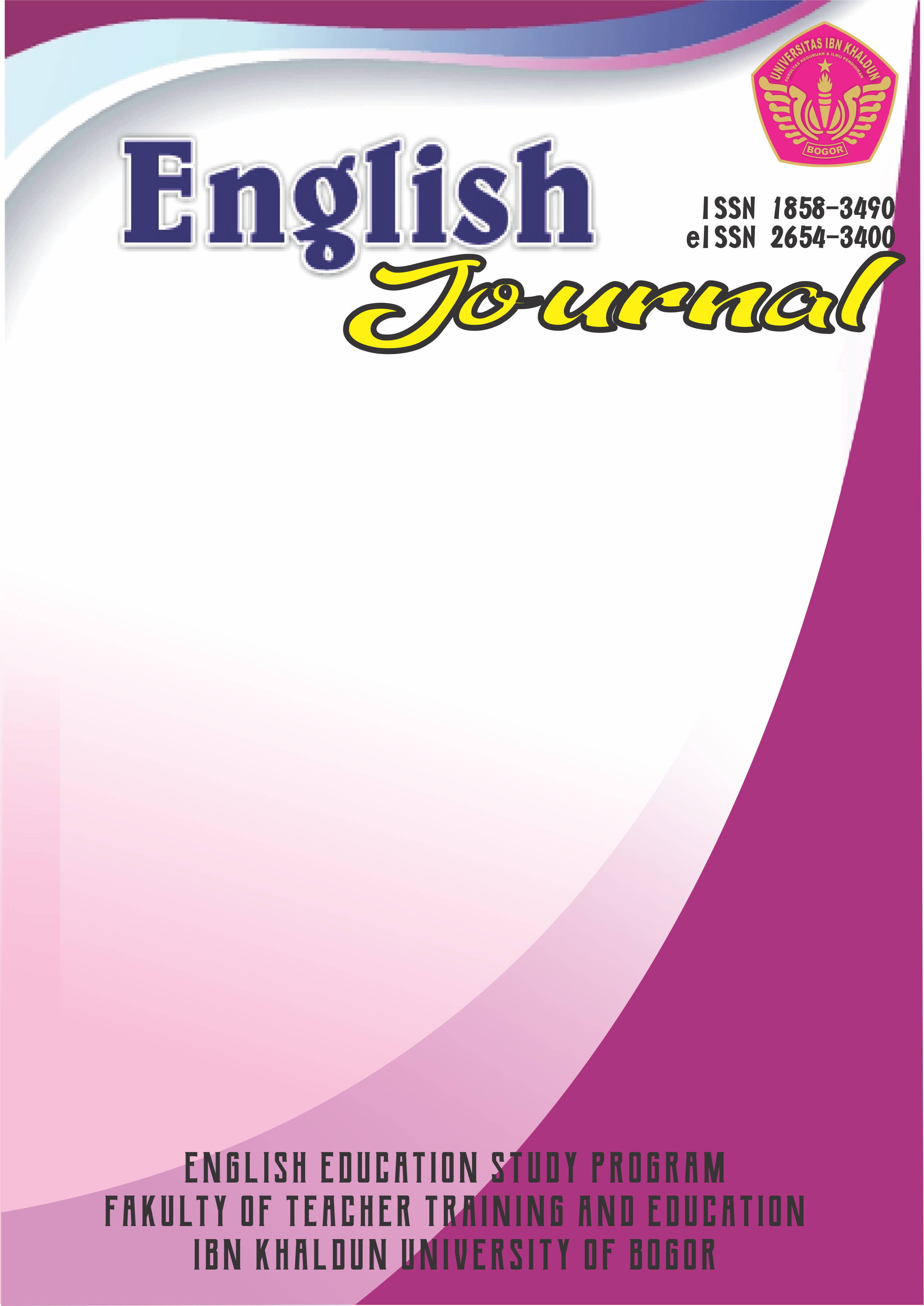STUDENTS' SPEAKING MOTIVATION THROUGH WORD ASSOCIATION
DOI:
https://doi.org/10.32832/english.v12i2.3773Abstract
This research was conducted to know the kinds of intrinsic and extrinsic motivation that students have when learning through word association game and the student's attitude performed. In conducting this research, the researcher used qualitative design. The data were collected through questionnaires and observations. The participants of this research were 28 students. The result of this research showed that the kinds of intrinsic motivation that the students showed on their desire (82.14%) could be seen from the aspects of happy, curious, and interested in learning speaking using game. The second intrinsic motivation showed in learning speaking using game was their interest (71.43%). The students needed the game because it was useful, relevant with their need, appropriate with the lesson and they could achieve the learning outcomes (85.72%). The last, the students had intrinsic motivation of goal (78.57%) and it could be seen from their understanding and mastered the lesson successfully, found new vocabulary and implemented the moral value from game. Furthermore, they had extrinsic motivation and it could be seen. From the fact that for the teacher did not only teach the lesson but also supported and made in learning process easier, their parents gave support to learn English and the classroom was comfortable to learn (92.86). The students' attitude was shown from the fact that they understood the content of game and they answered teachers' question correctly and actively. From the result, the researcher concluded that using game influenced students' motivation in learning speaking using game and the students' attitudes are positive.
References
Bailey, L. (2003). Teaching language to young learners. United Kingdom: Cambridge University Press.
Brown, J. D. & Theodore S.R. (2003). Doing second language research. New York: Oxford University Press.
Behrooz, H. S., & Pourmandnia, D. (2013). International Journal on New Trends in Education and Their Implications , 63.
Douglas, B. H. (2000). Principles of Language Learning and Teaching. New Jersey: Prentice-Hall, Inc.
Harmer, J. (2001). The Practice of English Language Teaching. London: Longman.
Ghofur, A. (2016). The Use Of Picture Method in Teaching Speakingv Skill. A paper of Sarjana Degree. Universitas Ibn Khaldun. Bogor.
Harmer, J. (2007). How to teach English. England: Pearson Longman.
Harmer, J. (2011). The Practice of English Language Teaching. London: Longman.
Hurlock, E. B. (2016). Child Development, Six Edition. New York: McGraw Hill Book Company.
Ira, G. J. (1956). The Teacher as A Guidance Worker. New York: Harper and Row.
Kolb, J. (2002). Carving Out Time for Curiosity: The Effect of Students
Kolb, J. (2002). Carving Out Time for Curiosity: The Effect of Students Questions on Intrinsic Motivation. Educational Studies Journal, 2.
Kolb, J. (2002). Carving Out Time for Curiosity: The Effect of Students Questions on Intrinsic Motivation. Educational Studies Journal, 2.
Lai, E. R. (2011). Motivation: A Literature Review. International Journal of Management and Commerce Innovations, 2.
Linse, C. & Nunan, D. (2005). Practical English language teaching young learners. New York: McGraw-Hill Companies.
Pawlak, N. (2011). Teaching ESL/EFL listening and speaking. New York: Routledge Taylor & Prancis Group.
Richard, A. (2006). Children learning second language. Chippenham and Eastbourne: CPI Antony Rowe.
Steers, R. M., & Porter, L. W. (1994). Motivation and Work Behavior. Singapore: McGraw Hill International Book Company.
Wyldeck, K. (2007). Grammar and vocabulary games for children. The United State of America: Lulu.com.
Kolb, J. (2002). Carving Out Time for Curiosity: The Effect of Students Questions on Intrinsic Motivation. Educational Studies Journal, 2.
Lai, E. R. (2011). Motivation: A Literature Review. International Journal of Management and Commerce Innovations, 2.
Linse, C. & Nunan, D. (2005). Practical English language teaching young learners. New York: McGraw-Hill Companies.
Malley, A. (2004). Games for childrens. Hongkong: Oxford Univeristy Press.
Meara, R. & Malvern, D. (2009). Vocabulary studies in first and second language acquisition. England: Palgrave Macmillan.
Mulyati, R. (2013). The Effectiveness of Using Magic Dice Game on The Students Vocabulary Mastery. A paper of Sarjana Degree. Universitas Ibn Khaldun. Bogor.
Paul, D. (2003). Language teaching methodology. Newyork: Cambidge University Press.
Ushida, E. (2005). The Role of Students' Attitudes and Motivation in Second Language Learning in Online Language Courses. CALICO Journal, 51.

















1.png)




